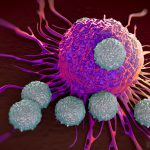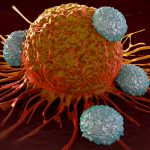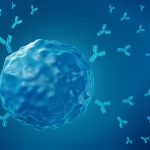To find new therapies for advanced, treatment-resistant prostate cancer, researchers from the University of Pittsburgh have developed a high-throughput screen that examined 220,000 compounds, from which they identified several small molecules capable of inhibiting the cancer cells in cell culture and animal studies.
The new screening method and results were presented in a pair of papers published May 17 in the journal ASSAY and Drug Development Technologies and May 27 in the journal ACS Medicinal Chemistry Letters.
More than 30,000 patients each year are diagnosed with advanced prostate cancer, and it is the second leading cause of cancer deaths in the United States. Androgen-deprivation therapy, which denies tumor cells the hormones they need to grow, is one of the primary treatments for prostate cancer, but almost all patients eventually progress to the more advanced and aggressive stage of the disease known as castration-resistant prostate cancer (CRPC).
CRPC progression is driven by the androgen receptor in cancer cells, so blocking this receptor has become a major focus of prostate cancer research, explained Zhou Wang, Ph.D., professor and director of urological research in the Department of Urology, and co-leader of the Molecular and Cellular Cancer Biology Program of the University of Pittsburgh Cancer Institute (UPCI), who along with Peter Wipf, Ph.D., professor of chemistry, and co-leader of the UPCI Cancer Therapeutics Program, led the new research.
 “Our goal is to develop novel androgen receptor antagonists for the treatment of patients for whom the current therapies aren’t working, so we can prolong their life,” said Dr. Wang.
“Our goal is to develop novel androgen receptor antagonists for the treatment of patients for whom the current therapies aren’t working, so we can prolong their life,” said Dr. Wang.
As part of a decade-long effort to develop new treatments for CRPC by targeting the androgen receptor located specifically in the nucleus of CRPC cells, the researchers developed a novel high-throughput assay that can quickly screen a large volume of potential candidate inhibitors.
Based on the results of the screen, the team then designed, prepared and optimized several novel inhibitors identified by their ability to reduce the levels of the androgen receptor in the nucleus, and, subsequently, androgen receptor activity.
The most promising candidate, JJ-450, is being sponsored by UPMC Enterprises, and shows promise in treating prostate cancer in animals.
 “We’re excited that the new compound meets important benchmarks for further preclinical development. We hope to test its efficacy against CRPC in clinical trials down the line,” said Dr. Wipf.
“We’re excited that the new compound meets important benchmarks for further preclinical development. We hope to test its efficacy against CRPC in clinical trials down the line,” said Dr. Wipf.
Additional collaborators on the project included co-first authors of the ASSAY and Drug Development Technologies paper, Paul Johnston, Ph.D., of Pitt, and Minh Nguyen, Ph.D., formerly of Pitt, currently a scientist at LabCorp in Minnesota; and co-first authors of the ACS Medicinal Chemistry Letters paper, James Johnson, B.S., of Pitt and Erin Skoda, Ph.D., formerly of Pitt and currently of the U.S. Food and Drug Administration.








